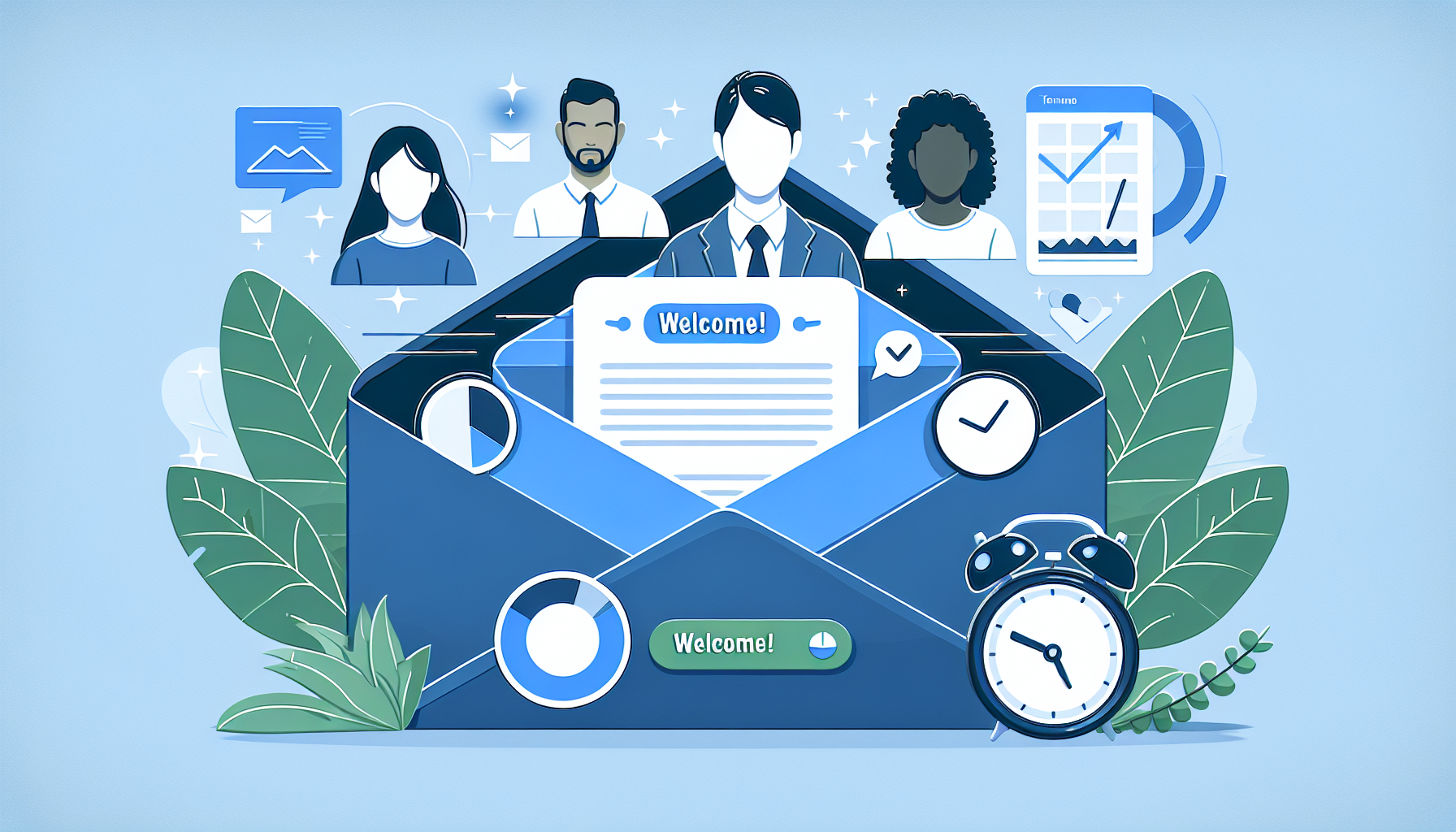Are you feeling overwhelmed by the idea of selling your online courses? You’re not alone! Many course creators struggle to navigate the complex world of email marketing, wondering how to actually connect with their audience while driving sales.
But don’t fret! If you stick with me, I promise to share effective strategies on how to harness the power of email funnels to boost your course sales. By the end of this, you’ll have a solid grip on creating and optimizing an email funnel that’ll have potential students eager to enroll.
Together, we’ll explore everything from setting up your email funnel to crafting engaging content and even automating your campaigns. Let’s dive in and unlock the potential of email marketing for your online courses!
Key Takeaways
- Email funnels guide potential students from awareness to enrollment, making them essential for selling courses.
- Define your goals and use an email marketing platform to set up your funnel.
- Craft valuable email content with engaging subject lines and clear calls-to-action.
- Segment your audience to tailor messages and improve engagement.
- Automate email campaigns to save time and maintain consistent communication.
- Regularly analyze performance metrics to optimize your funnel and content.
- Follow best practices, like consistency and personalization, to enhance email effectiveness.
- Build trust through transparency, testimonials, and community engagement.

Understanding Email Funnels for Selling Online Courses
Email funnels are crucial for selling online courses because they help to nurture leads and guide potential students through the buying journey.
Think of your email funnel as a roadmap that takes your audience from awareness to enrollment.
You start by attracting individuals who might be interested in your course.
Next, you engage them with valuable content and persuasive messaging that positions your course as the solution to their needs.
Ultimately, the goal is to convert those leads into paying students.
Setting Up Your Email Funnel
Setting up your email funnel involves several key steps.
First, define your goals. Are you looking to increase enrollments, build brand awareness, or both?
Next, choose an email marketing platform like Mailchimp or ConvertKit that suits your needs.
From there, create segments based on your audience’s interests, demographics, or behavior to tailor your messaging.
Then, decide on a lead magnet—something valuable that you can offer (like a free ebook or mini-course) in exchange for their email addresses.
Don’t forget to design your landing pages where you will collect email addresses, ensuring they are visually appealing and easy to navigate.
Crafting Compelling Email Content
Once your funnel is set up, it’s time to focus on crafting compelling email content.
Your emails should offer value first and foremost; think tips, advice, or free resources relevant to your course.
Make sure to use attention-grabbing subject lines to boost your open rates.
Include storytelling elements—a personal anecdote or a success story from a past student can make your emails more relatable and engaging.
Always include a clear call-to-action (CTA) directing readers toward the next step, whether that’s enrolling in your course or downloading a resource.
For example, if you’re teaching in the realm of online education, share insights from your experience or link to helpful articles about creating engaging content, like effective lesson writing strategies.
Segmenting Your Audience for Better Engagement
Audience segmentation is essential for better engagement in your email marketing campaigns.
This involves grouping your subscribers based on characteristics such as age, interests, or previous interactions with your content.
By doing this, you can tailor your messages to resonate more with each group—leading to higher open and click-through rates.
For instance, if you have a mix of beginners and advanced students on your list, send different emails that address their specific pain points and questions.
You can even create specific campaigns for different courses that you offer.
This personalized approach not only feels more authentic but also strengthens your relationship with your audience—making them more likely to enroll in your course.

Automating Your Email Campaigns
Automating your email campaigns can save you time and ensure consistent communication with your audience.
The first step is to create a sequence of emails that guide your subscribers through your funnel.
Tools like Mailchimp or ConvertKit allow you to set up automated drip campaigns that send emails based on triggers.
For example, you might send a welcome email immediately after someone signs up.
Then, you can wait a couple of days before sending them valuable content and eventually, an enrollment offer.
Be sure to segment your audience when doing this; different segments may require different sequences.
Regularly review the performance of your automated emails to identify any potential adjustments that can improve engagement.
Analyzing Funnel Performance and Making Adjustments
Analyzing the performance of your email funnel is crucial for maximizing the effectiveness of your campaigns.
Start by tracking key metrics such as open rates, click-through rates, and conversion rates.
Open rates can indicate whether your subject lines are working, while click-through rates can show how engaging your email content is.
Tools like Google Analytics or your email marketing platform’s built-in analytics can be invaluable for this.
If you notice certain emails underperforming, consider tweaking the subject lines or content to better resonate with your audience.
A/B testing is an excellent method to experiment with different approaches without a complete overhaul.
After analyzing trends, don’t hesitate to adjust your entire funnel based on what the data reveals.
Best Practices for Email Marketing in Online Course Sales
Following best practices in email marketing can significantly enhance your success in selling online courses.
First, be consistent in your sending schedule; this helps your audience know when to expect your emails.
Make sure your emails are mobile-friendly, as many users check their emails on smartphones.
Also, prioritize creating engaging subject lines that don’t just sell but also inform.
Always focus on providing value rather than simply pushing a sale; your audience will appreciate it.
Consider personalizing your emails by using your subscriber’s name and addressing their specific needs.
Lastly, ensure your emails comply with regulations such as GDPR and CAN-SPAM; this protects your brand and builds trust.
Building Trust and Credibility Through Email
Building trust and credibility through your email communication is key to converting leads into paying students.
Start by being transparent about who you are and what your course offers.
Share testimonials or success stories from your previous students to showcase the impact of your course.
You can also provide free value upfront, such as tips or downloadable resources, which can build your authority in your niche.
Regularly engage with your subscribers by asking for their feedback, and encourage them to reply to your emails.
This two-way communication fosters a sense of community and makes them feel valued.
Lastly, consistency in your messaging and branding further solidifies your credibility over time.

Final Steps to Launch Your Email Funnel
Launching your email funnel is an exciting move, and getting it right can lead to great outcomes.
Start by conducting a final review of all your emails in the sequence.
Make sure your links work, the email formatting is consistent, and there are no typos or grammatical mistakes.
Then, test your emails by sending them to yourself or a small group of friends to get feedback on how they look and whether the content resonates.
Once you’re confident in your emails, it’s time to promote your lead magnet to start grabbing those email addresses.
Consider leveraging social media, your website, and even paid ads to reach your target audience.
As leads start flowing in, continue engaging them consistently with valuable content.
Monitoring the performance of your funnel right after launching it is also essential, so you can make quick adjustments if needed.
With all these steps completed, you’re ready to welcome new students into your course!
FAQs
An email funnel is a series of automated emails designed to nurture leads. By guiding potential students through a structured journey, it helps build engagement, showcase course value, and ultimately convert subscribers into paying customers.
Enhance engagement by personalizing your content, using compelling subject lines, and providing valuable insights. Storytelling and clear calls-to-action can also make your emails more relatable and encourage readers to take the next step.
Monitor key metrics such as open rates, click-through rates, and conversions. A/B testing different elements can provide insights, and regular reviews help you adapt your strategy for improved performance over time.
Building trust involves consistent communication, delivering valuable content, and being transparent about your offers. Incorporating testimonials and case studies can also enhance credibility and encourage subscriber trust.
